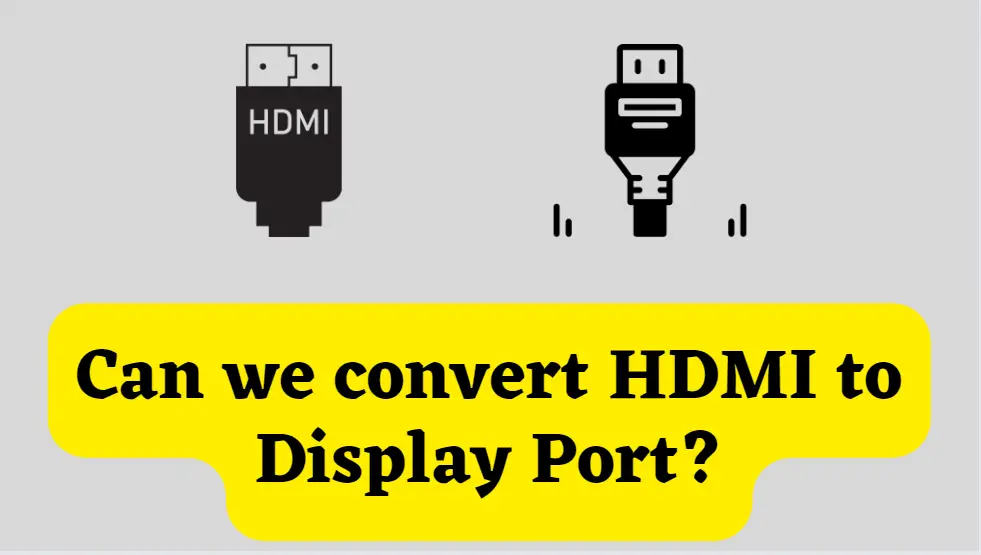Mobile Mastery: Transforming Work Habits with 8 iOS Productivity Techniques

There are a lot of connectors that can be used to interface monitors with PCs and laptops. The most common are HDMI, VGA, and DisplayPort. Now that the era of 720p desktops is coming to an end, the world moves on from the outdated VGA connector. This leads us to the more modern HDMI and DisplayPort connectors. Let’s understand what they are and how they can be used to get the best out of our PC.
The HDMI connector is a well-known name in the PC sphere. It stands for High Definition Media Standard. It’s not only a name but also a standard. It is a standard for transmitting digital audio and video from a source. They allow us to transmit high-resolution audio and video. It was developed by multiple companies on April 2002. And since then, it’s been the leading industry standard ever since. It supports up to 8K 60FPS transmission with HDMI 2.0 and is a reliable way of transmitting video content. Here is a list of refresh rates and Resolutions supported by various versions of HDMI.
DisplayPort is another type of connector developed by a combination of multiple organizations. They are all under the umbrella of VESA. VESA stands for Video Electronics and Standard Association. It was designed on May 2006 and production started in 2008. Here is a list of various resolutions and refresh rates supported by various DisplayPort versions. The maximum refresh rate and resolution depend on the version of DisplayPort being used.
DisplayPort 1.1
DisplayPort 1.2
DisplayPort 1.3 and 1.4
DisplayPort 2.0
It is worth noting that DisplayPort 2.0 was announced in 2019. Not all devices or monitors support this version yet. It may take some time before it becomes widely adopted.
It is possible to convert DisplayPort to HDMI. It can be done using an active adapter. An active adapter is an adapter that includes an integrated chip that performs the conversion. This type of adapter will have a DisplayPort Connector on one end and an HDMI connector on the other. This way, you can connect a device with a DisplayPort output to a display that only has an HDMI input.
Much like DisplayPort to HDMI, we can convert HDMI to DisplayPort signals. This can also be done by using an active adapter or converter. Active Converter Converts signal and provides power. Also, there are passive converters that just convert the signal and do not provide power.
Some Converters also have an inbuilt scalar that can convert the resolution to correspond with the native resolution of the monitor.
Additionally, some of the HDMI to Display Port Converters come equipped with additional functions. These include support for audio and multiple monitors, as well as compatibility for high resolution and refresh rates.
These all mention converters will allow multiple HDMI displays to a single DisplayPort Output on your computer.
There can be multiple reasons why you’d want to convert DisplayPort to HDMI and vice versa. One of them is compatibility. If your PC, or laptop or game console only has HDMI ports and your monitor or display only has DP ports, it's a good idea to get a converter.
An HDMI to DisplayPort converter, in general, is a tool that can be beneficial for bridging the gap between various devices and ensuring compatibility with a broad variety of monitors and displays.
An active HDMI to DisplayPort converter can convert the signal and make it possible to use a high-resolution display when using a device with a high-resolution display that is not supported by the native HDMI output of the device. This is also the case when using a device with a high-resolution display that is not supported by the native HDMI output of the device.
However, since they are different standards, problems might arise while trying to do so. Some of the major problems are
To avoid any potential problems, it's recommended to check for compatibility before buying an active adapter. While there are some problems, they can be fixed with a simple power cycle. But make sure that you check compatibility before you buy anything.
We can confidently say that conversion to an HDMI to DisplayPort is possible. And while it is fairly uncomplicated and easy to work with, some problems might arise. It’s good practice to do your research on compatibility and make sure that everything will work well. This prevents buyer's remorse in the future.
Article by : Adamya Neupane

